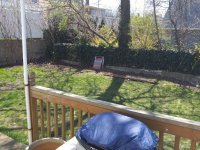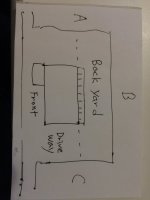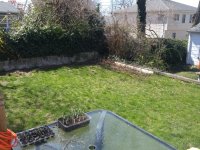Sandy T
Member
Hello my saviors,
I have a basic question about a slope on my backyard. My house is located on a hill (not steep, maybe 15-20 degree or so). So as you see the picture, my backyard is slightly slopped (maybe 5 degree) down from neighbor A to neighbor C. The problem I have is that the retaining wall between my backyard and C is falling, so I am thinking to remove the slope, leveling the backyard. My question is
1. Do I need to have a slope (pitch) on my backyard for drainage?
2. If so, I am thinking to have a slope down toward neighbor B (pitching toward my house). Distance from my deck to the fence of B is about 30 feet. If I am pitching toward B, what slope should I make? like 12 inches per 15 feet?
I really appreciate it if you help me solve this dilemma.
Thank you!!
I have a basic question about a slope on my backyard. My house is located on a hill (not steep, maybe 15-20 degree or so). So as you see the picture, my backyard is slightly slopped (maybe 5 degree) down from neighbor A to neighbor C. The problem I have is that the retaining wall between my backyard and C is falling, so I am thinking to remove the slope, leveling the backyard. My question is
1. Do I need to have a slope (pitch) on my backyard for drainage?
2. If so, I am thinking to have a slope down toward neighbor B (pitching toward my house). Distance from my deck to the fence of B is about 30 feet. If I am pitching toward B, what slope should I make? like 12 inches per 15 feet?
I really appreciate it if you help me solve this dilemma.
Thank you!!



